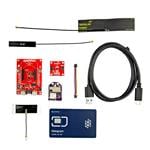- Home
- Braemac Blog
- Top 10 Tips to Ensure Robust IoT Cybersecurity
Top 10 Tips to Ensure Robust IoT Cybersecurity
About Jari Haiston

The future of connectivity is powered by billions of interconnected devices, but with that connectivity comes unprecedented cybersecurity risk. With over 14.4 billion IoT devices in use globally, and a cyber-attack occurring every 39 seconds, the stakes for robust IoT security have never been higher.
AI-powered tools are rapidly transforming the way developers monitor, detect, and mitigate security threats across connected environments. As traditional security methods struggle to keep pace with sophisticated attacks, AI offers real-time adaptability, anomaly detection, and predictive defenses.
What is IoT Cybersecurity and How Does AI Fit In?
IoT cybersecurity refers to the systems and strategies used to safeguard internet-connected devices and the networks they operate on. However, the unique challenges of IoT, like constrained computing resources and diverse operating environments, demand more than conventional security approaches.
That’s where AI-enhanced cybersecurity comes in. AI can:
- Continuously learn from network traffic to detect zero-day threats.
- Automate anomaly detection by identifying irregular device behavior.
- Predict attack patterns using historical data and behavioral modeling.

10 Tips for Enhancing Your IoT Network Security
Developers must meet the demand for enhanced IoT security standards as digital intelligence evolves through IoT devices. Microsoft’s report, IoT Signals, outlines a solid foundation of best practices for IoT security:
- Design for breach resilience at every level of your IoT project.
- Analyze real-time dataflows for anomalies and breaches.
- Establish trust boundaries between the compartments of IoT projects.
- Implement limited access for devices and cloud storage.
- Track vulnerabilities and determine exposure points for third-party dependencies.
- Share information with other security organizations.
- Perform penetration testing (including Red Team exercises).
- Perform static analysis of code (including Coverity and other tools).
- Perform threat modeling.
- Perform fuzz testing.
When paired with AI and machine learning (ML), these best practices become even more powerful. For example, AI-driven analytics can detect real-time anomalies in dataflows, while adaptive access control uses ML to verify identities based on behavior patterns. Automated vulnerability scanning tools powered by AI can continuously assess code and third-party dependencies, and AI-guided penetration tests can evolve alongside your infrastructure.
Threat modeling and fuzz testing are also enhanced, as AI can simulate edge-case scenarios and generate unpredictable inputs to expose hidden weaknesses—making your IoT cybersecurity approach more proactive, precise, and scalable.
Common IoT Cybersecurity Threats – And How AI Defends Against Them Types of IoT Security and Privacy Issues
Even the best-built systems can face attacks. Common security attacks for IoT devices and networks include:
- Radio frequency jamming
- Ransomware
- Unauthorized access
- Data interception
- Physical attacks
- Brute force attacks
- Firmware exploits
- Distributed denial of service (DDoS)
- Man-in-the-middle attacks

AI helps combat these threats by detecting RF anomalies, identifying encryption inconsistencies, flagging compromised devices in real time, and autonomously responding to active breaches—enabling faster, smarter defense across IoT networks.
Designing Secured IoT with Braemac Americas Solutions
The shift-left movement is prompting security measures from design onset. Cybersecurity is no longer an afterthought. By integrating next-generation AI-enabled solutions from the start, developers can engineer connected devices that are not only functional but resilient against evolving cyber threats.
At Braemac Aemricas | Symmetry Electronics, our curated portfolio includes a wide range of AI-integrated hardware and tools purpose-built for secure, scalable IoT development. Braemac Americas makes it easier than ever to embed intelligence and protection directly into your designs.
Built for secure IoT deployment, the SparkFun XBee® Cellular Kit combines Digi International’s Digi XBee® 3 Cellular LTE-M/NB-IoT module with a versatile SparkFun development board to deliver encrypted, cloud-ready connectivity straight out of the box. The XBee® 3 module features onboard BLE, GNSS, MicroPython support, and a dedicated hardware encryption chip—ensuring secure device authentication and end-to-end data protection.
Designed with cybersecurity in mind, it supports TLS encryption, secure remote access, and Digi TrustFence® security architecture for embedded threat protection and firmware integrity. The included development board offers USB-C connectivity, integrated battery management, full GPIO/ADC access, and streamlined firmware deployment—making it an ideal platform for prototyping edge-connected devices with built-in defenses against today’s evolving threat landscape.
The MediaTek Genio 1200 EVK is engineered for secure, high-performance IoT and edge AI applications. At its core is a flagship octa-core SoC featuring ARM TrustZone and secure boot ROM, which establish a hardware root of trust and a trusted execution environment (OP-TEE) for protecting sensitive operations and secure code execution.
With onboard dual-band Wi-Fi 6, Bluetooth 5.2, and expansion support for 5G modules, the platform enables secure, high-speed connectivity to cloud services. Out-of-the-box compatibility with Android, Yocto, and Ubuntu allows developers to easily integrate cloud SDKs like AWS IoT and Azure IoT—making the Genio 1200 EVK an ideal choice for deploying connected devices with robust, hardware-anchored cybersecurity at the edge.
Built on the secure MediaTek Genio 1200 SoC, the VIA SOM-7000 EVK offers a reliable platform for developing cloud-connected devices with built-in protection. It features hardware-enforced safeguards including secure boot, ARM TrustZone-based trusted execution, and anti-rollback mechanisms to maintain firmware integrity and guard against tampering.
Supporting Android 13, Yocto 4.0, and Debian 12, the SOM-7000 EVK enables developers to run secure cloud SDKs and containerized workloads with ease. Integrated Wi-Fi 6 and Bluetooth 5.2 provide fast, encrypted wireless communication—making it a strong fit for secure remote monitoring, over-the-air updates, and cyber-resilient edge computing in industrial IoT environments.





.png)